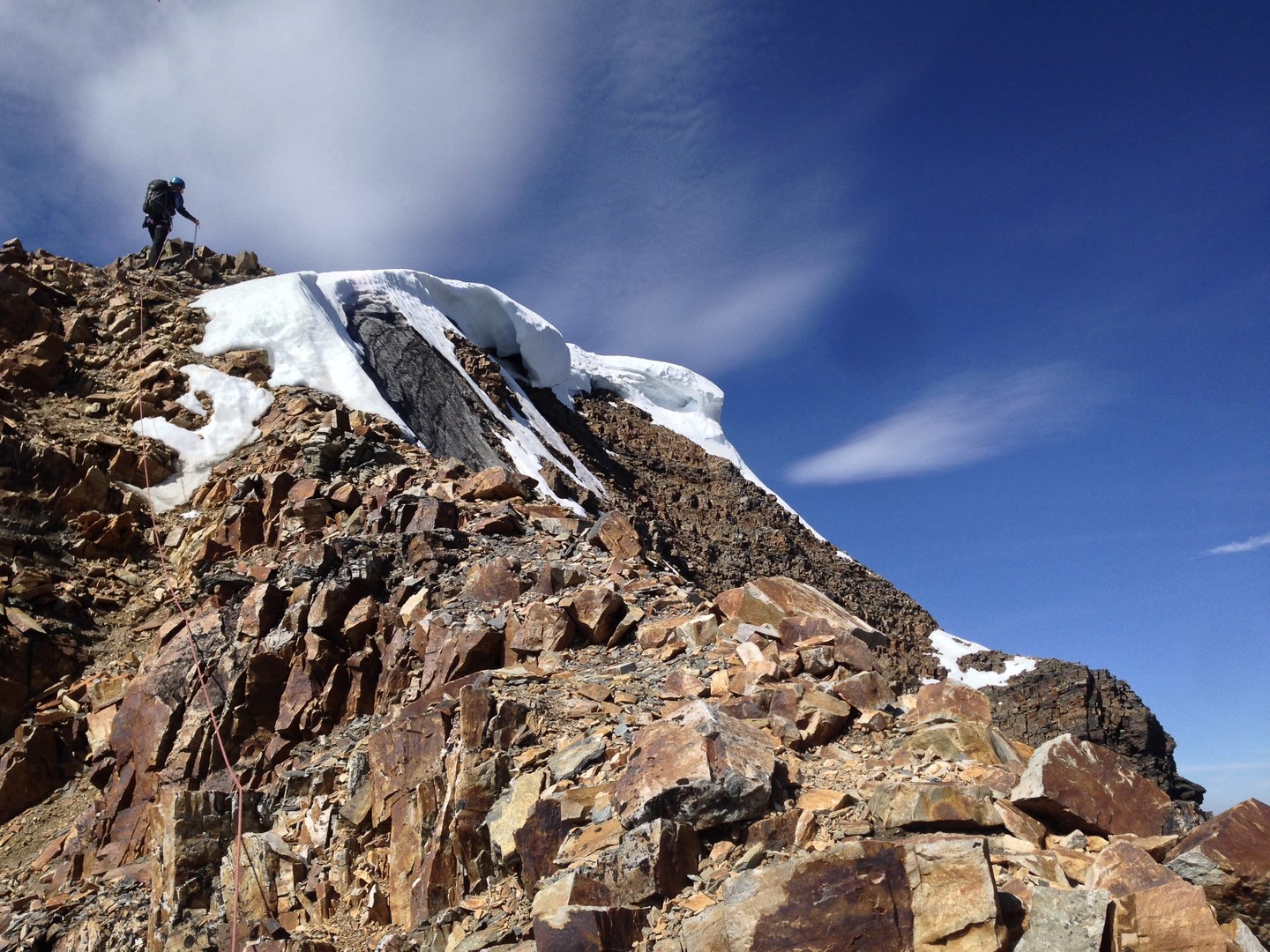You are here
With a supposedly easy grade of YDS 5.4, the climb of Mount Edith Cavell's east face may not look like much of a challenge. But constant exposure and vertical, with more than 800 metres of exposed third-, fourth-, and fifth-class scrambling makes this huge peak a big challenge. However, unlike many of Rocky Mountain 14ers, this route is famous for its quartzite, an unusually solid rock for a Rocky Mountain alpine route.
From the Edith Cavell Trailhead, work your way along the well-marked trails heading above Angel Lake.
The trail is straightforward until you get to a junction. Of two trails, one heads straight south and the other heads southwest into the talus-marked climbers trail. This second trail is a trap. The trail quickly disappears, and you will have to navigate through ankle-rolling talus. Instead, take the trail that follows directly beside the talus. Use it as a guardrail as you gently ascend. Eventually the trail peters out in the talus. From here, the ascent gets very steep. There is normally a snow slope that is much easier to ascend than the talus. Without snow, work your way up the talus and scree. It's tricky and steep, but manageable.
Once you gain the col, there is a very good vantage point of the route. There is a little bivvy shelter nearby, though apparently the pack rats are awful, so this is not the best spot for a bivvy. If you brought along the Select Alpine Climbs guidebook, you will notice now that the line basically goes nowhere. Take a second to choose from this angle the line you are going to take. I took the immediate climber's right of the seepage.
From here, climb up third- and occasional fourth-class rock. After 350 meters, you reach the first shoulder. From here the climbing gets a little spicier, most of it being fourth- and fifth-class climbing. Keep the ridge. Often there are some challenging blocks to work around, but normally the easiest way is to go up and over them.
Head upward until you gain the second shoulder. Often there is snow here, and for that reason it is always recommended to bring an ice axe and crampons as you can't normally see this angle from bellow.
Just where the shoulder starts to steepen, you get into the technical section. About 100 metres of fifth class takes you to the 5.4 crux. This section is fairly straightforward, though very exposed. There is a little bit of gear, but the holds are good, mostly sharp ledges and jugs.
Just past the crux, there is about 50 metres more of fifth class, and past that it gets much easier, mostly third class. From here, walk along the fairly wide ridge to the summit.
The descent offers you two choices:
- The West Ridge Scambling route: The ground is easier, and has some simple down-climbing, followed by a scree bash into the valley, and then 7 kilometers of hiking on a path out.
- Retreat back the way you came. This is pretty arduous, the going is slow, and there is really only the one rappel. The constant descent is very tiring on the knees. But once you're off the ridge, it's a simple route back to the car.
Logistics + Planning
Current Weather: Powered by Dark Sky





























Comments
Sign In and share them.